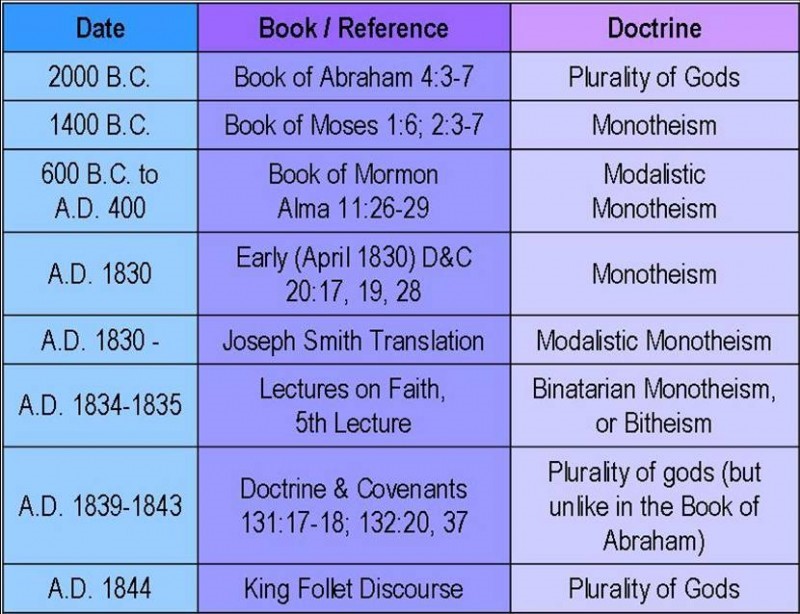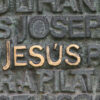Much is often made of the more than 3,900 changes that have been made to the book of Mormon from the time of its original publication in 1830. These changes have been clearly documented by a number of Non-Mormon groups and used to illustrate the Book of Mormon is not trustworthy because Joseph Smith made several contradictory statements about the nature of God. Most Mormons respond by arguing the vast majority of these changes were simply grammatical in nature and were oversights on the part of the scribe or the printer. They argue these changes are insignificant and meaningless; they don’t impact the validity of Mormon Scripture. But is this true?
If the Book of Mormon was translated as Mormon history claims, even small errors in the text should not exist. There should be no need to make nearly 4000 changes to the modern text, even if these changes are grammatical and insignificant. Mormon history does not allow for even small errors in the text, based on the very manner in which Mormonism claims Joseph translated the text:
“Joseph Smith would put the seer stone into a hat, and put his face in the hat, drawing it closely around his face to exclude the light; and in the darkness the spiritual light would shine. A piece of something resembling a parchment would appear, and on that appeared the writing. One character at a time would appear and under it was the interpretation in English. Brother Joseph would read off the English to Oliver Cowdery, who was his principal scribe, and when it was written down and repeated to brother Joseph to see if it was correct, then it would disappear, and another character with the interpretation would appear.” (Martin Harris, “Address to All Believers in Christ”, Richmond, Missouri, 1887, p.12)
“The translation was just as it was engraven on the plates precisely in the language then used… The translation of the characters appeared on the Urim and Thummim, sentence by sentence, and as soon as one was correctly translated the next appeared.” (Martin Harris, The Myth of Manu-Script Found, p.71 and p. 91)
“Martin Harris related an incident that occured during the time that he wrote that portion of the translation of the Book of Mormon which he was favored to write direct from the mouth of the Prophet Joseph Smith. He said that the Prophet possessed a seer stone, by which he was enabled to translate as well as from the Urim and Thummim, and for convenience he then used the seer stone, Martin explained the translation as follows: By aid of the seer stone, sentences would appear and were read by the Prophet and written by Martin and when finished he would say “Written,” and if correctly written that sentence would disappear and another appear in its place, but if not written correctly it remained until corrected, so that the translation was just as it was engraven on the plates, precisely in the language then used.” (Edward Stevenson, “One of the Three Witnesses,” reprinted from Deseret News, 30 Nov. 1881 in Millennial Star, 44 , 6 Feb. 1882, pp. 86-87).
“Now the way he translated was he put the urim and thummim into his hat and darkened his eyes then he would take a sentance and it would appear in brite roman letters then he would tell the writer and he would write it then that would go away the next sentence would come and so on. But if it was not spelt rite it would not go away till it was rite, so we see it was marvelous. Thus was the hol (whole) translated.” (Spelling as in the original cited in Dean Jessee, ‘Joseph Knight’s Recollection of Early Mormon History,’ BYU Studies, vol. 17:1, Autumn 1976, p. 35)
“When my husband was translating the Book of Mormon, I wrote a part of it, as he dictated each sentence, word for word, and when he came to proper names he could not pronounce, or long words, he spelled them out, and while I was writing them, if I made a mistake in spelling, he would stop me and correct my spelling, although it was impossible for him to see how I was writing them down at the time.” (Emma Smith, Edmund Briggs interview, 1856)
“(The Book of Mormon is) the most correct of any book on earth, and the keystone of our religion, and a man would get nearer to God by abiding by its precepts, than by any other book.” (History of the Church, Vol. IV, p.461)
‘These plates have been… translated by the power of God. The translation of them which you have seen is correct.’ (History of the Church, Vol. I, pp.54-55)
“Some persons have thought that the Lord revealed to Joseph the ideas, and that Joseph conveyed those ideas into the English language. But this is not so. The Lord gave not only the ideas but the language itself – the very words.” (Joseph F. Smith, sixth president of the Mormon Church, “The Territorial Inquirer”, March 2, 1881)
“Joseph did not render the writing on the gold plates into the English language in his own style of language as many people believe, but every word and letter was given to him by the gift and power of God…The Lord caused each word spelled as it is in the book to appear on the stones in short sentences or words, and when Joseph had uttered the sentence or word before him and the scribe had written it properly, that sentence would disappear and another would appear. And if there was as a word wrongly written or even a letter incorrect, the writing on the stoned would remain there.” (Joseph F. Smith, “Journal of Oliver Huntington”, p.168, Utah State Historical Society)
If the text was translated as Mormon Leaders first claimed, each word was examined carefully prior to being written down on paper. All the minute details were verified in advance of the printing, and even small grammatical errors should not exist in something Mormons claim to be the Word of God. After all, God is supposed to be the source of the translation. And according to the History of the Mormon Church, God took incredible care to make sure Joseph got it right and his translators understood what Joseph was saying.
It’s More Than Printer Error
Even Mormons understand their own writings make it difficult for them to claim the error occurred in the translation process. That’s why many Mormons claim these nearly 4000 changes must be attributed to printer error. According to these Mormon apologists, the man who set the print was hostile to the Mormon cause and must have, through carelessness or willful malice, caused these errors. But if this were the case, wouldn’t the Mormon leadership, and especially Joseph Smith himself, have corrected the errors as soon as the printed version was produced? The second printing should have been perfect, because the prophet himself (inspired presumably by God) would be able to proof read the text and allow God to speak to him about the errors. But this was not the case in Mormon history. Changes were not made to the scriptures for many years. And these changes, when they occurred, were not simply the correction of small spelling or grammatical errors. These changes involved whole words changing the contextual meaning of the Book of Mormon. Here are some examples, with explanations reaching beyond the possibility of printer error:
Original 1830 Text (Alma 15, p. 303):
“yea, I know that he alloteth unto men, yea, decreeth unto them decrees which are unalterable, according to their wills”
Later, Altered Text (Alma 29:4):
“yea, I know that he alloteth unto men, according to their wills”
Later editions from at least 1840 to 1980 deleted eight words without explanation. LDS leaders re-inserted the omitted words into all editions since 1981. It is possible Joseph Smith deleted this portion of the verse because it conflicted with a revelation he claimed to receive in 1831 found in Doctrine & Covenants 56:4,5 ‘Wherefore I, the Lord, command and revoke, as it seemeth me good; and all of this upon the heads of the rebellious, saith the Lord. Wherefore, I revoke the commandment which was given unto my servants …’ The words were later reinserted into the text and are present there today.
But in addition to this, there are two alterations to the Book of Mormon that deal with the errant placement of a name:
Original 1830 Text (Mosiah 9, p. 200):
“…King Benjamin had a gift from God, whereby he could interpret such engravings…”
Current, Altered Text (Mosiah 21:28):
“…King Mosiah had a gift from God, whereby he could interpret such engravings…”
Original 1830 Text (Ether 1, p. 546):
“…and for this cause did King Benjamin keep them…”
Current, Altered Text (Ether 4:1)
“…and for this cause did King Mosiah keep them…”
According to Book of Mormon chronology, King Benjamin was already dead when these events took place. Apparently LDS leaders changed the name to Mosiah to eliminate the mistake. There also appear to be changes to the text attempting to accommodate later developing doctrines within the church:
Original 1830 Text (1 Nephi 5, p. 52)
“…O house of Jacob, which are called out of the waters of Judah, which swear by the name of the Lord…”
Current, Altered Text (1 Nephi 20:1):
“…O house of Jacob, which are called out of the waters of Judah, or out of the waters of baptism, which swear by the name of the Lord…”
The late addition to the text appears to be in an effort to accommodate and justify the evolving doctrine of Mormon baptism. Mormon apologists sometimes claim this late addition is simply clarification of the text, but as Christians, we know that no late addition to scripture, whether it is a commentary or late clarification, can ever be allowed to enter into God’s Word. God is very clear about that. Mormons have done this, however, and they have also changed the Book of Mormon several times in order to eradicate early doctrines:
Original 1830 Text (2 Nephi 12, p. 117):
“…and many generations shall not pass away among them, save they shall be a white and a delightsome people.”
Later, Altered Text (2 Nephi 30:6, 1840 edition)
“…and many generations shall not pass away among them, save they shall be a white pure and a delightsome people.”
Still Later, Altered Text (2 Nephi 30:6, editions until 1981):
“…white and delightsome…”
Even Later, Altered Text (2 Nephi 30:6, editions until 1981):
“…pure and delightsome…”
Before 1978, dark-skinned males were not allowed to hold positions of priesthood authority within the Mormon Church. Today Mormon scriptures continue to teach dark skin is a curse from God and a sign of His displeasure (See 1 Nephi 12:23; 2 Nephi 5:21; Alma 3:6). Brigham Young, second president and prophet of the LDS church referred to those with dark skin as being “cursed with a s(k)in of blackness” (Journal of Discourses, vol. 11, p. 272). The Church appears to be struggling with its early statements about people with dark skin. Rather than allow the Book of Mormon to speak for itself, they have altered it to minimize the impact of early Church doctrine.
The Most Troubling Changes
At the very least, the Book of Mormon is untrustworthy as an historical document. At worst, it has not been treated as a sacred text and includes the late work of editors. In addition to changes we’ve already discussed, there are an even more significant set of alterations occurring over time to the Book of Mormon. Many changes were made to accommodate the changing theology of Joseph Smith. While God may reveal himself to us in ever increasing increments over time, Christians understand God never contradicts His earlier revelations. But, the evolving theology of Joseph Smith, as seen in his scriptural writings, does just that: Joseph paints a picture of a god who changes his revelation of himself and contradicts his own earlier revelation. Let’s begin to take a look at the issue by examining some changes in the book of Mormon:
Original 1830 Text (1 Nephi 3, p. 25):
“And he said unto me, Behold, the virgin whom thou seest is the mother of God, after the manner of the flesh.”
Current, Altered Text (1 Nephi 11:18):
“And he said unto me, Behold, the virgin whom thou seest is the mother of the Son of God.”
Original 1830 Text (1 Nephi 3, p. 25):
“And the angel said unto me, behold the Lamb of God, even the Eternal Father!”
Current, Altered Text (1 Nephi 11:21):
“And the angel said unto me, behold the Lamb of God, even the Son of the Eternal Father!”
Original 1830 Text (1 Nephi 3, p. 26):
“And I looked and beheld the Lamb of God, that he was taken by the people; yea, the Everlasting God, was judged of the world.”
Current, Altered Text (1 Nephi 11:32):
“And I looked and beheld the Lamb of God, that he was taken by the people; yea, the Son of the Everlasting God, was judged of the world.”
Original 1830 Text (1 Nephi 3, p. 32):
“These last records … shall make known to all kindreds, tongues, and people, that the Lamb of God is the Eternal Father and the Savior of the world.”
Current, Altered Text (1 Nephi 13:40)
“These last records … shall make known to all kindreds, tongues, and people, that the Lamb of God is the Son of the Eternal Father and the Savior of the world.”
Did you notice something common to all these alterations? They represent a change in theology. All these passages, in their first versions, describe a monotheistic God. While Joseph initially held the historic Christian belief there is only one God, he departed from orthodoxy by denying there is a clear distinction between the Persons within the Trinity. A number of passages in the Book of Mormon present Heavenly Father and Jesus Christ as the same Person. Theologians call this “modalism”, because Father and Son are understood not as distinct persons, but merely as different modes in which the one God has manifested Himself at different times. But importantly, later versions of the Book of Mormon were then altered to accommodate Joseph’s later-developing polytheism. Clearly Joseph held an evolving notion of the nature of God. In his earliest writings he is a monotheist, but as time passed, he abandoned his monotheism for a distinct Mormon brand of polytheism.
Some Mormons have argued God reveals his nature over time, showing us a little bit more with each succeeding prophet in the history of Christianity. So why should we be surprised we would learn more and more about God’s nature as time progresses? Isn’t it possible that Joseph, as God’s last prophet, could simply be showing us the clearest (and presumably final) view of the nature of God? That might be true if Mormon Scripture progressed in a linear fashion over time, but just the opposite occurs. The chronology of Mormon Scripture actually contradicts itself and changes its description of the nature of God.
Joseph Smith As A Monotheist
There are three major stages in the development of Joseph Smith’s doctrine of Deity. The earliest stage is represented by the Book of Mormon (1830), the Book of Moses (1830-31), and the Joseph Smith Translation of the Bible (1833). Many passages from these early works of Joseph Smith reveal his belief in monotheism. Here are a few of the numerous examples:
Book of Mormon, Alma 11:26-28
“And Zeezrom said unto him: Thou sayest there is a true and living God. And Amulek said: Yea, there is a true and living God. Now Zeezrom said: Is there more than one God? And he answered, No.”
The Book of Mormon ‘Testimony of the Three Witnesses’ Preface:
“And honor be to the Father, and to the Son, and to the Holy Ghost, which is one God. Amen.”
Joseph Smith Translation of the Bible Isaiah 44:6,8 (left unchanged):
“Thus saith the LORD the King of Israel, and his redeemer, the LORD of hosts; I am the first, and I am the last; and beside me there is no God. Is there a God beside me? yea, there is no God; I know not any.”
The Book of Moses, Moses 1:6:
“And I have a work for thee, Moses, my son; and thou art in the similitude of my Only Begotten; and mine Only Begotten is and shall be the Savior, for he is full of grace and truth; but there is no God beside me, and all things are present with me, for I know them all.”
Now many Mormons have tried their best to harmonize and rationalize the monotheistic passages in the Book of Mormon with Joseph’s later teaching of the plurality of Gods, by saying while there are many Gods, “there is only one God with whom we have to do, or whom we worship”. But in light of the JST version of Isaiah 44:8 (“Is there a God beside me? yea, There is no God; I know not any”) and a number of other passages like Isaiah 43:10-11; 45:21-22; 46:9, it’s hard to argue this position.
Joseph Smith as a “Binitarian”
In 1834-35, during the Kirtland, Ohio period, Joseph Smith made a major departure from the Book of Mormon emphasis on the Father and Son as the same person. While still apparently maintaining there is only one God (monotheism), he began to teach there are two persons within the Godhead – the Father and the Son. Theologians call this “binitarianism.” This second stage in Joseph’s teaching regarding Deity is found in the Doctrine and Covenants “Lectures on Faith”:
Lectures on Faith, Lecture Five:
There are two personages who constitute the great, matchless, governing and supreme power over all things — by whom all things were created and made . . . They are the Father and the Son: The Father being a personage of spirit, glory and power: possessing all perfection and fullness: The Son, who was in the bosom of the Father, a personage of tabernacle, made and fashioned like unto man.
Lectures on Faith, Lecture Five (question and answer section)
Q. How many personages are there in the Godhead?
A. Two: the Father and the Son.
According to the Lectures on Faith, the Holy Ghost, or Holy Spirit (the two terms were not distinguished at this stage), is not a person, but is the shared ‘mind’ of the Father and Son.
Joseph Smith As A Polytheist
The Book of Abraham, first published in 1842, represents the fourth and final stage of Joseph Smith’s developing doctrine of Deity. Here, for the first time, Joseph spells out in no uncertain terms the doctrine of the plurality of Gods:
Book of Abraham 4:2-3
“And the earth, after it was formed, was empty and desolate . . . and the Spirit of the Gods was brooding upon the face of the waters. And they (the Gods) said: Let there be light.”
Expressions such as “the Gods called,” “the Gods ordered,” and “the Gods prepared” occur 45 times in Abraham 4-5. And directly related to the doctrine of the plurality of Gods is Joseph’s teaching that Heavenly Father is an exalted man who Himself has a Father, and whose Father has a Father, ad infinitum.
In a June 16, 1844 sermon recorded in the History of the Church, Joseph described this new understanding that there are many Gods and that Heavenly Father is Himself the offspring of a more ancient Deity:
Joseph Smith’s King Follet Discourse (History of the Church, vol. 6)
“I want to reason a little on this subject (that God himself has a father). I learned it by translating the (Book of Abraham) papyrus that is now in my house. I learned a testimony concerning Abraham, and he reasoned concerning the God of heaven . . . If Abraham reasoned thus – If Jesus Christ was the Son of God, and John discovered that God the Father of Jesus Christ had a Father, you may suppose that He had a Father also.”
Clearly, Joseph changed his position on the nature of God, but is it simply a matter of God revealing himself progressively? Mormons and Non-Mormons will agree God is the source of all truth, and because consistency is an essential characteristic of truthfulness, we all instinctively believe God will be consistent in revealing Himself to humanity. We see this is true in the Christian Bible. What God reveals about Himself in the New Testament goes beyond Old Testament revelation, but it builds upon what went before without contradicting it (read Matthew 5:17; Romans 3:21,31). Biblical revelation is consistent and progressive.
Is it possible that the successive phases of Joseph Smith’s teaching about God are progressive as well? The development from modal monotheism, to binitarian monotheism, to the plurality of Gods could perhaps be considered progressive in the sense that it moves in a consistent direction. But if you lay out the different descriptions of that Joseph has given us in the chronological order in which they are said to appear in Mormon History, there is a problem. Parts of the Mormon scripture are allegedly ancient revelation, restored more recently by Joseph Smith. So when we look at Joseph’s writings, we can’t look at them in the order in which he wrote them. We have to look at them in the order in which they were supposed to have been written before they were restored and translated by Joseph. Since God cannot lie or contradict Himself, later revelation should be consistent with and not contradict what came earlier. Let’s take a look at the Mormon Scriptures and see if they reflect the non-contradictory nature of God:

Viewed from this perspective, a perplexing pattern emerges, as this chart reveals. According to Mormonism, after revealing the doctrine of the plurality of Gods in Abraham’s time (2,000 B.C.), God later sent prophets beginning with Moses (1400/1300 B.C.) and through the end of the Book of Mormon period (A.D. 400) who taught monotheism, only to have Joseph Smith revert back to teaching the plurality of Gods in the nineteenth century. Can such inconsistency and confusion be attributed to the true and living God, or does this inconsistency and confusion tell us something about the validity of the Book of Mormon, Book of Moses, and the Book of Abraham?
Why the Big Deal?
So what if there are contradictions between what the different Mormon scriptures teach about the nature of God? And what if the Mormon doctrine of God is vastly different from historic Christianity? Can’t a faithful Mormon still pray to a Heavenly Father, experience meaning and wholeness in religious worship, and find consolation when a loved one dies? Why do the contradictions and differences matter? It’s important to have more than a good feeling about God; it’s important to be more than sincere and passionate. When considering the things of God, it’s important to be accurate. Truth matters. Look at what Jesus told the Samaritan woman in the Gospel of John:
John 4:22-24
“Ye worship ye know not what: we know what we worship; for salvation is of the Jews . . . . God is a Spirit: and they that worship him must worship him in spirit and in truth”
Passion and sincerity are important, but they are no substitute for truth. Jesus said, “the truth shall make you free,” and he didn’t say much about your passion or sincerity. The God of Mormonism appears to be inconsistent and confused. As a result, can anything else in these texts be trusted? The changing nature of God as described in the Mormon scriptures is not indicative of the true God worshiped by Christians. If God is truly immutable and eternal, Mormonism is false. As Christians, our faith has to begin and end in truth.
For more information on Joseph Smith’s changing doctrine of God and the modifications made to Mormon scripture, please refer to the Institute for Religious Research and Latter-Day Sense.

J. Warner Wallace is a Dateline featured cold-case homicide detective, popular national speaker and best-selling author. He continues to consult on cold-case investigations while serving as a Senior Fellow at the Colson Center for Christian Worldview. He is also an Adj. Professor of Christian Apologetics at Talbot School of Theology, Biola University, and a faculty member at Summit Ministries. He holds a BA in Design (from CSULB), an MA in Architecture (from UCLA), and an MA in Theological Studies (from Gateway Seminary).
































